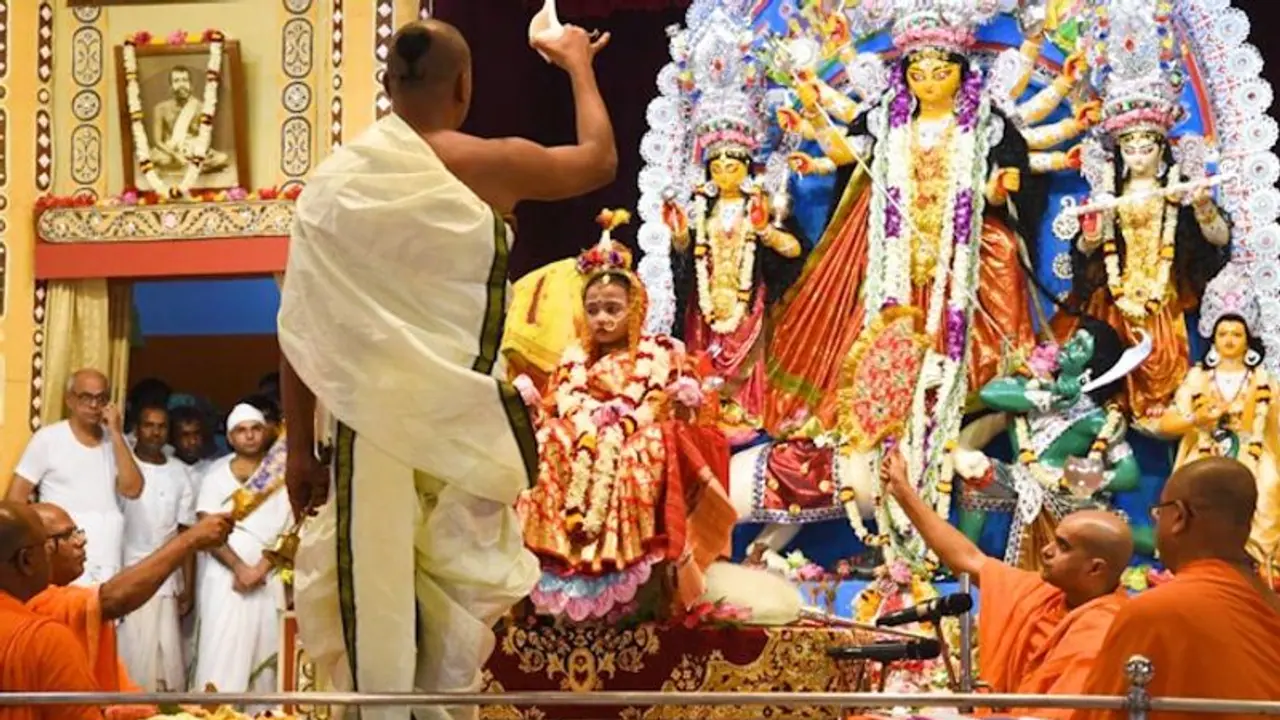Maha Ashtami, a vital day in Navratri, celebrates Goddess Durga with purification rituals. Kumari Puja reveres a young girl as a living deity, emphasizing the divine feminine energy and gender equality. These traditions invoke blessings, strength, and devotion
Maha Ashtami, a significant day in the Hindu festival of Navratri, is celebrated with great fervor and devotion. This day is dedicated to the worship of the fierce and powerful goddess, Durga. The word "Ashtami" refers to the eighth day of the lunar calendar, and Maha Ashtami typically falls on the eighth day of the Navratri festival, which spans nine nights and ten days. The rituals, poojas, and ceremonies associated with Maha Ashtami hold immense significance in Hindu culture.


Maha Ashtami Pooja Rituals and Significance:
Maha Ashtami is characterized by elaborate and sacred rituals that are performed to honor Goddess Durga. The day begins with devotees waking up early to perform a ceremonial bath for the idol of the goddess, symbolizing her purification. This is followed by the recitation of mantras and the lighting of lamps, incense, and the offering of flowers to the deity.
One of the most crucial elements of Maha Ashtami is the Kumari Puja, which is a special ritual where a young prepubescent girl is worshipped as the embodiment of the goddess herself. The Kumari, often dressed in traditional attire and adorned with various ornaments, is seated on a decorated pedestal. The priest performs the puja, offering flowers, sweets, and other offerings to the Kumari, while the devotees seek her blessings.
The significance of Maha Ashtami lies in its celebration of the divine feminine energy, represented by Goddess Durga. Devotees believe that by worshipping the goddess on this day, they can invoke her blessings for strength, protection, and courage. The act of purifying the idol and the Kumari represents the removal of impurities from one's life, both physical and spiritual. The lighting of lamps and incense symbolizes the dispelling of darkness and the presence of divine light.
Kumari Puja and Its Significance:
Kumari Puja, a central aspect of Maha Ashtami, is a unique and beautiful ritual in Hinduism. In this ceremony, a young girl is chosen to represent the goddess and is revered as a living deity. The chosen Kumari is typically between the ages of 6 and 16 and is required to possess certain qualities, including purity, grace, and fearlessness.
The significance of Kumari Puja lies in the belief that the young girl embodies the divine qualities of Goddess Durga. During the ritual, the Kumari is dressed in traditional attire, often resembling the goddess herself. She is adorned with symbols and jewelry associated with Durga, and a red bindi is placed on her forehead, symbolizing the third eye or divine insight.
The priest conducts the puja by offering flowers, fruits, sweets, and incense to the Kumari, seeking her blessings. Devotees touch her feet as a sign of respect and devotion. The Kumari's presence is considered particularly auspicious, and her blessings are believed to bestow strength, wisdom, and protection upon the devotees.
Kumari Puja also highlights the importance of the divine feminine energy in Hinduism. It underscores the idea that women and girls are carriers of immense power and should be revered and respected. This ritual is a poignant reminder of the significance of gender equality and the recognition of the goddess within every woman.
Maha Ashtami and Kumari Puja are integral parts of the Navratri festival, symbolizing the celebration of the divine feminine energy and the embodiment of Goddess Durga's power. The rituals associated with Maha Ashtami purify the mind and soul, while Kumari Puja emphasizes the significance of young girls as vessels of divinity. These traditions enrich the cultural and spiritual heritage of Hinduism, fostering devotion, respect, and the acknowledgment of the goddess's strength in all aspects of life.
